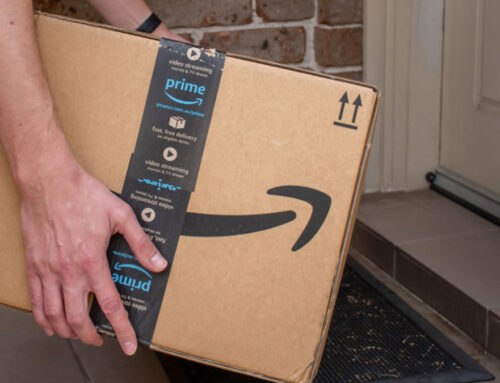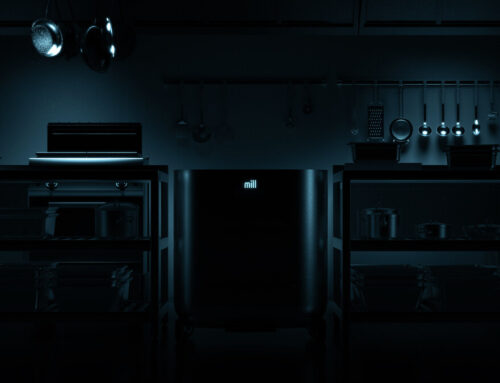Medical Cannabis Vape Products Outsold Flower In Utah. Here’s Why
May 19, 2025
In nearly every state with a medical cannabis market in place, flower is king, but monthly reports indicate that vape cartridges and pens in Utah are outpacing flower sales. In April, the most recent data available, over 47% of medicated product sales were vape products, compared to about 32% for flower.
The state monitors medical cannabis sales activity closely: Utah’s seed-to-sale tracking system, Leaf Data Systems, was developed by Akerna Corp., a company formed by merging MJ Freeway and MTech. Each cannabis plant and product is assigned a unique identifier, using cryptographically secure tagging technology. The Utah Department of Health and Human Services, along with the Utah Department of Agriculture and Food, oversee the administration of this system.
There are several reasons for Utah’s preference for vape products, one being that smoking as a delivery form is prohibited under Utah’s medical cannabis system—an unenforceable rule with flower available. The other reason? Concentrates are lumped together in the same category as carts and pens, including high quality extracts like live resin or rosin.
Dragonfly Wellness was the first medical cannabis pharmacy to open up in the state, and the only location in downtown Salt Lake City, one of Utah’s vertically-integrated medical cannabis operations.
“Here in Utah, we have a lot of law-abiding citizens that want to be legal, want to be compliant, and don’t want to break the law,” Dragonfly Wellness Chief Operating Officer Narith Panh says in a video call. Since Utah’s medical cannabis law doesn’t allow smoking as a delivery form, some companies in the state are developing better ways for patients to vape dry flower.
“Our first core value at Dragonfly is patient-first,” Panh says. “This is what we’ve always stood for. This is what our patients know. This is what our community knows of us. So what that means is our core values drive the decisions that we make every single day. So when you have a patient-first core value alongside with a core value that’s about quality, integrity, learning, and growing—these values help us make decisions on where we go with innovation.”
Panh explained that vape products are a bit more discreet than smoking, with a much lower odor factor. “The other part about the combustion law is that we don’t sell pre-rolls,” Panh says, referring to the state’s medical cannabis rules. “And if you go to any other market, pre-rolls make up around 20% of the category sales. So if you do the math and your flower sales is only 30-35%, where’s the other 20? Because in other mature markets, it’s 50-60% flower. Flower is king. So those are the factors that lead to why vapes are preferred. And that leads to the problem that Dragonfly set out to solve.”
After releasing successful pod and cart systems, the Dragonfly Wellness team unveiled its latest dry flower vaping system: Ember. The device has an OLED screen running down the side, with customizable temperatures running up to 446°F. It can be toggled to specific temps with terpenes in mind. Myrcene breaks down at about 334°F, pinene at about 313°F, and other terpenes break down at lower or higher temperatures.
“When you’re smoking, you’re heating at temperatures that are 600°F+. What happens is that if you have a terpene that’s a boiling point of 313°F, like pinene, you might not actually get the full effect of that, and you’re just smoking past it,” he says. “It’s really hard to pick up some of the tones, the notes, the flavors, unless you’re a connoisseur, and you’ve got a knack for those flavors.” Panh explained how dry herb vaporizers extend the shelf life of flower, because smoking destroys a portion of it immediately.
Panh’s brother was severely injured in 2019 in an auto-pedestrian hit-and-run accident, having to undergo brutal spine infusions. He turned to a 1:1 THC:CBD regimen that transformed both brothers and led to Panh’s entry into the medical cannabis world.
Doctors will never fully give approval to inhaling anything warm or hot, but without combustion there are fewer toxins, Panh explained. Could dry herb vaporizers catch on in Utah, where smoking is prohibited? Patients will ultimately decide.
Utah Patients and Vape Preferences
Utah Patients Coalition Executive Director Desiree Hennessy is frequently involved in the state’s legislative process. The organization represents medical cannabis patients in Utah, with over 100,000 now registered, a milestone for the state.
“In most states, flower products dominate cannabis sales, but Utah’s market is unique. We do everything ‘the Utah way’ and our choice in medication is no different,” Hennessy says. “Utah does not allow smoking cannabis and does not allow any type of home cultivation, making vape products a practical inhalation method. Early in our program we struggled to access flower and several companies struggled with different aspects of the cultivation process. Our testing facility also had a turn around time of close to two months that left patients struggling to find consistent products. I believe that that scenario—combined with the state’s cultural conservatism—shaped patient preferences.”
The Utah-based Latter-day Saints church updated its General Handbook in 2020, approving of medical cannabis under the guidance of a doctor—minus combustion. Though the church initially opposed Utah legislation, leaders have clarified that legitimate medical cannabis use among its members is approved.
But when you live in an apartment and smoke cannabis, you can smell it in the hallway. It’s one of many ways patients attract the wrong attention due to the stigma of medical cannabis.
“Vape cartridges also offer a discreet, low-odor and easy to use option—and that’s especially important in a place where stigma surrounding the plant still exists,” Hennessy says. “Patients in apartments or in public need to have a low to no smell option. For many patients, cartridges provide faster symptom relief than edibles and allow for more precise dosing, which can reduce overall consumption while improving therapeutic results. All of these factors contribute to why vape products lead sales in Utah’s medical cannabis market.”
Hennessy has been the executive director of the Utah Patients Coalition since shortly after Proposition 2 passed. “I was deeply involved in the campaign and, to be honest, felt both honored and a little terrified when I was asked to step into this role,” she says. “Since then, I’ve worn a lot of hats—advocating for patients, helping shape legislation and serving on the state’s Medical Cannabis Policy Advisory Board to ensure the patient’s voice is heard in every policy discussion. Each year during the legislative session, I’m at the Capitol lobbying for improvements to the program and protecting patient access. Our organization also runs the Utah Patients Subsidy Program, which helps terminal and palliative care patients afford their medication when they have no other options.”
“At the core of everything we do are the patients—their stories, their struggles and their resilience,” Hennessy says. “That’s what drives me. I see my role as being a voice for those who can’t always speak for themselves.”
Flower vs. Combustion and How Utah Tracks Vape Products
Flower sales domination is normal in other markets, says Beehive Farmacy Founder Bijan Sakaki. “You have pre-rolls. You have combustion,” Sakaki says. “In our market, you’re unable to combust and you’re unable to use pre-rolls, which typically drive a lot of sales for flower as well.”
Beehive Farmacy, another vertically-integrated company in Utah, opened medical cannabis pharmacies with its flagship location in Salt Lake City, and another in Brigham City. Sakaki turned to medical cannabis long ago amid his battle with ulcerative colitis. He had to undergo infusions, which caused side effects similar to chemotherapy. Medical cannabis is used by patients to restore appetite, among many other reasons.
As far as devices are concerned, Beehive Farmacy is moving away from multiple subpar brands but sticking with the better-built products such as Storz & Bickel and Pax, providing devices that are comfortable enough to be used daily. “The devices are getting better,” Sakaki says. “And think they can get something that’s close to smoking. Nothing is the same as smoking, but we can [get close]. We sell devices that are as low as $60 bucks for a flower vape. But we’re moving away from that because that’s not a comfortable experience.” Buy the more solid devices, he says.
Operators at medical cannabis pharmacies say the numbers are skewed and flower sales are likely higher than they appear. “Sometimes the categorizations from concentrate to a vape cart aren’t correct,” Sakaki says, describing how the data is collected and how categories are combined. “If you look, the concentrate numbers are skewed with that. The other part to that would be the introduction of the two-gram disposable vapes. I think a lot of people are trying to think of how they might make my dollars stretch a little farther.” Beehive’s flower brand Buzz was recently awarded Best Cannabis Flower by Salt Lake City Weekly in 2024.
Many patients in Utah rely on on-site pharmacists for direction and possible interactions for their medical cannabis products. First-time and older patients and are another element that shapes the landscape.
“Utah’s non-combustion laws shape a lot of what’s happening here, but our consumer base is different—we’ve got a wave of first-timers, young and old, giving cannabis a shot now that it’s legal,” says Salt Baked City Publisher Cole Fuller, who prints Utah’s only cannabis publication. “The stigma still lingers, and that’s part of why I started Salt Baked City—to help normalize the conversation. In Utah, discreet consumption isn’t just a preference—it’s often a matter of survival. As a patient myself, the convenience of modern products is hard to beat. That said, I do worry about the environmental cost tied to these outdated laws.”
Fullmer believes medical cannabis can replace pharmaceuticals like opioids, after watching how they impacted his own family. He hopes to share the power of medical cannabis with others who are negatively impacted by pharmaceuticals.
These are the facets that are impacting Utahn’s preference for vape carts, pens, and concentrates. Flower sales continue to make up a large chunk of sales, but Utah’s patients continue to buy vape and extract products more than any other category.
Search
RECENT PRESS RELEASES
Related Post




